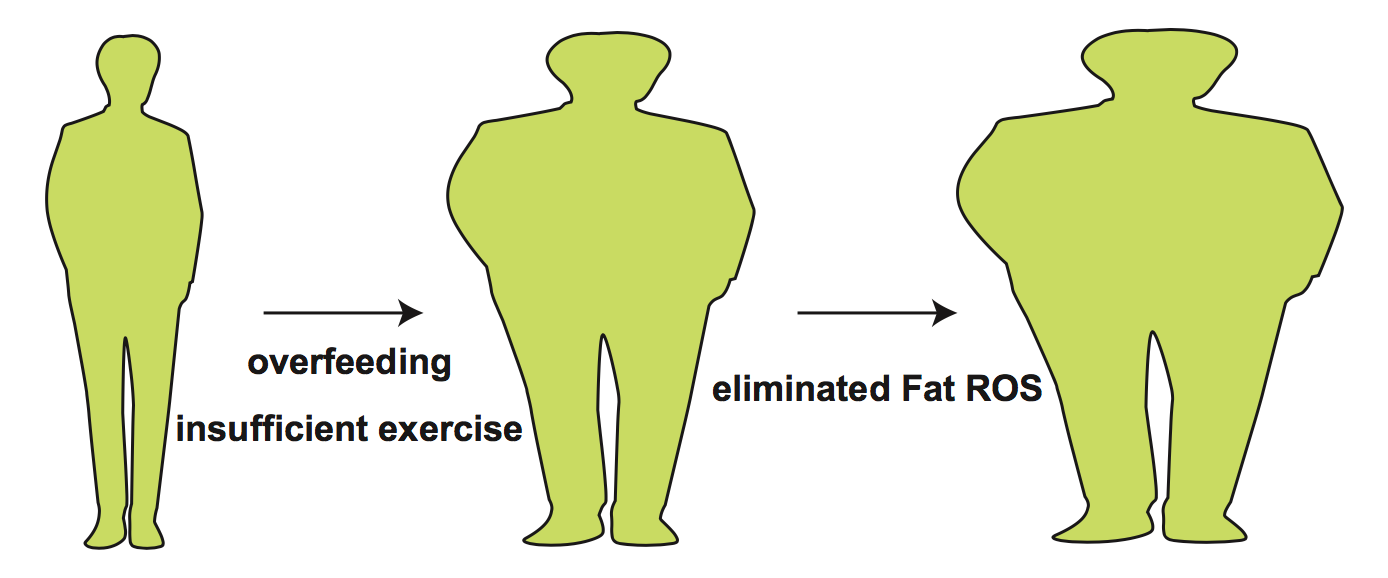
Oxidative stress makes difference between metabolically abnormal and healthy obesities
Scientists at Osaka University clarified that deletion of adipose oxidative stress (Fat ROS) decreased lipid accumulation in the liver, clinically improving insulin resistance and inducing metabolically healthy obesity. In fact, Fat ROS suppressed lipid accumulation and increased ectopic lipid accumulation in the liver, worsening insulin resistance. Their research results were published in Diabetes on Wednesday, April 4, 2018.
In most people, obesity is caused by eating too much and moving too little. There are two types of obesity: metabolically abnormal obesity associated with insulin resistance and metabolic disorder and metabolically healthy obesity without these complicating disorders; however, the molecular mechanism behind this difference was unknown.
In 2004, a group of researchers led by Atsunori Fukuhara reported that oxidative stress increased in the obese adipose tissues. However, it was difficult to create a mouse model in which oxidative stress was manipulated to target adipocytes. So, the causal role of Fat ROS in obesity in vivo still remained unclear.
In their research, this group clarified the following: Fat ROS-eliminated mice, in which two antioxidant enzymes (Catalase and Sod1) were overexpressed in adipocytes using an adipocyte-specific aP2 promoter cassette, exhibited adipose expansion with decreased ectopic lipid accumulation and improved insulin sensitivity. Conversely, Fat ROS-augmented, Adipoq promoter-driven Cre transgenic mice, in which antioxidant substance glutathione was depleted specifically in adipocytes, exhibited restricted adipose expansion associated with increased ectopic lipid accumulation and deteriorated insulin sensitivity.
SREBF1 transcriptional activities were suppressed by oxidative stress, suppressing expression of lipogenic genes in adipocytes, which was found to be the underlying mechanism for suppression of de novo lipogenesis by oxidative stress.
It is expected that the results of this study will lead to the development of drugs targeting Fat ROS to induce healthy adipose expansion, which will lead to treatment of obese type 2 diabetes.

Fig.1. Elimination of Fat ROS causes healthy obese.
(credit: Osaka University)

Fig.2. Fat ROS distinguish between healthy and pathological obese.
(credit: Osaka University)
To learn more about this research, please view the full research report entitled "Oxidative stress inhibits healthy adipose expansion through suppression of SREBF1-mediated lipogenic pathway" a t this page of Diabetes .
Related links
